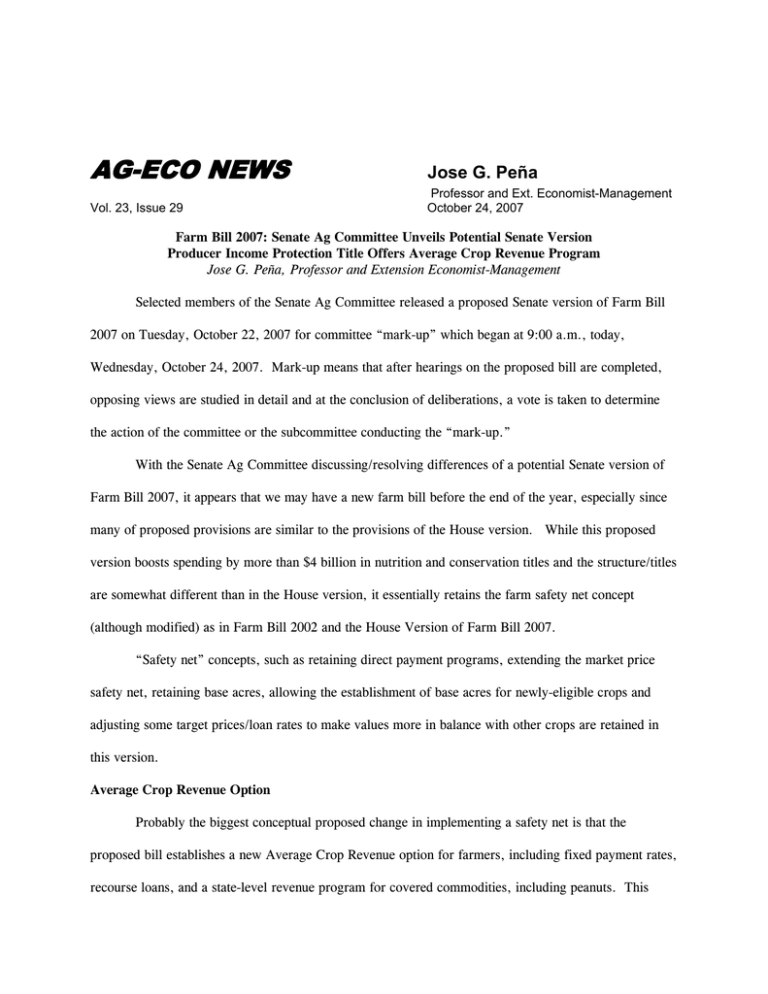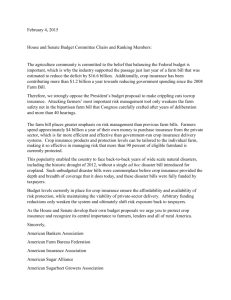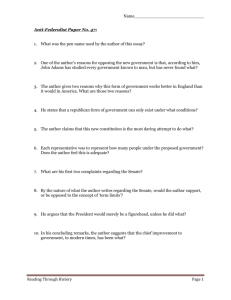AG-ECO NEWS Jose G. Peña
advertisement

AG-ECO NEWS Jose G. Peña Vol. 23, Issue 29 Professor and Ext. Economist-Management October 24, 2007 Farm Bill 2007: Senate Ag Committee Unveils Potential Senate Version Producer Income Protection Title Offers Average Crop Revenue Program Jose G. Peña, Professor and Extension Economist-Management Selected members of the Senate Ag Committee released a proposed Senate version of Farm Bill 2007 on Tuesday, October 22, 2007 for committee “mark-up” which began at 9:00 a.m., today, Wednesday, October 24, 2007. Mark-up means that after hearings on the proposed bill are completed, opposing views are studied in detail and at the conclusion of deliberations, a vote is taken to determine the action of the committee or the subcommittee conducting the “mark-up.” With the Senate Ag Committee discussing/resolving differences of a potential Senate version of Farm Bill 2007, it appears that we may have a new farm bill before the end of the year, especially since many of proposed provisions are similar to the provisions of the House version. While this proposed version boosts spending by more than $4 billion in nutrition and conservation titles and the structure/titles are somewhat different than in the House version, it essentially retains the farm safety net concept (although modified) as in Farm Bill 2002 and the House Version of Farm Bill 2007. “Safety net” concepts, such as retaining direct payment programs, extending the market price safety net, retaining base acres, allowing the establishment of base acres for newly-eligible crops and adjusting some target prices/loan rates to make values more in balance with other crops are retained in this version. Average Crop Revenue Option Probably the biggest conceptual proposed change in implementing a safety net is that the proposed bill establishes a new Average Crop Revenue option for farmers, including fixed payment rates, recourse loans, and a state-level revenue program for covered commodities, including peanuts. This change effectively creates two commodity titles. Farmers will have to decide (on a one-time basis for the life of the farm bill) if they want the current commodity program or choose the state-wide Average Crop Revenue(ACR) option . Farmers would have to give up their current direct payments for a $15/acre fixed payment if they enroll in ACR. While specific benefits of this option have to be developed, supporters of this option think that a significant number of farmers would select this option because they expect to have better protection if markets collapse. The ACR option has already been criticized because there would have to be a widespread reduction in price and/or yield in a state for anyone to qualify for payment. For farmers who sign up for ACR, the prohibition on planting fruits, vegetables and other specialty crops on base acres would be eliminated. Payment Limits Also, similar to the House version, the proposed bill reforms current payment limitations including provisions to directly attribute payments to program beneficiaries and eliminate the three entity rule, i.e., all payments will be attributed to an actual, living, person, rather than a paper entity. The payment limit amount appeared unclear and will be addressed more during the “mark-up.” The bill would lower the income cap for non-farmers receiving payments to $750,000, which now stands at $2.5 million. It also would lower the income cap for farmers from $2.5 million to an amount that is still under negotiation. Passage of Farm Bill? Keep in mind that we are still a long way from a final farm bill. The Senate Ag Committee must first resolve any differences before the proposed bill is presented to the Senate for a vote. The Senate must pass its version of the farm bill. The House passed its version on July 27, 2007. Conflicts (differences) between the House and Senate versions must be resolved before the bill is passed by Congress and presented to the President for final signature. These differences will likely have to be resolved in a conference committee.



